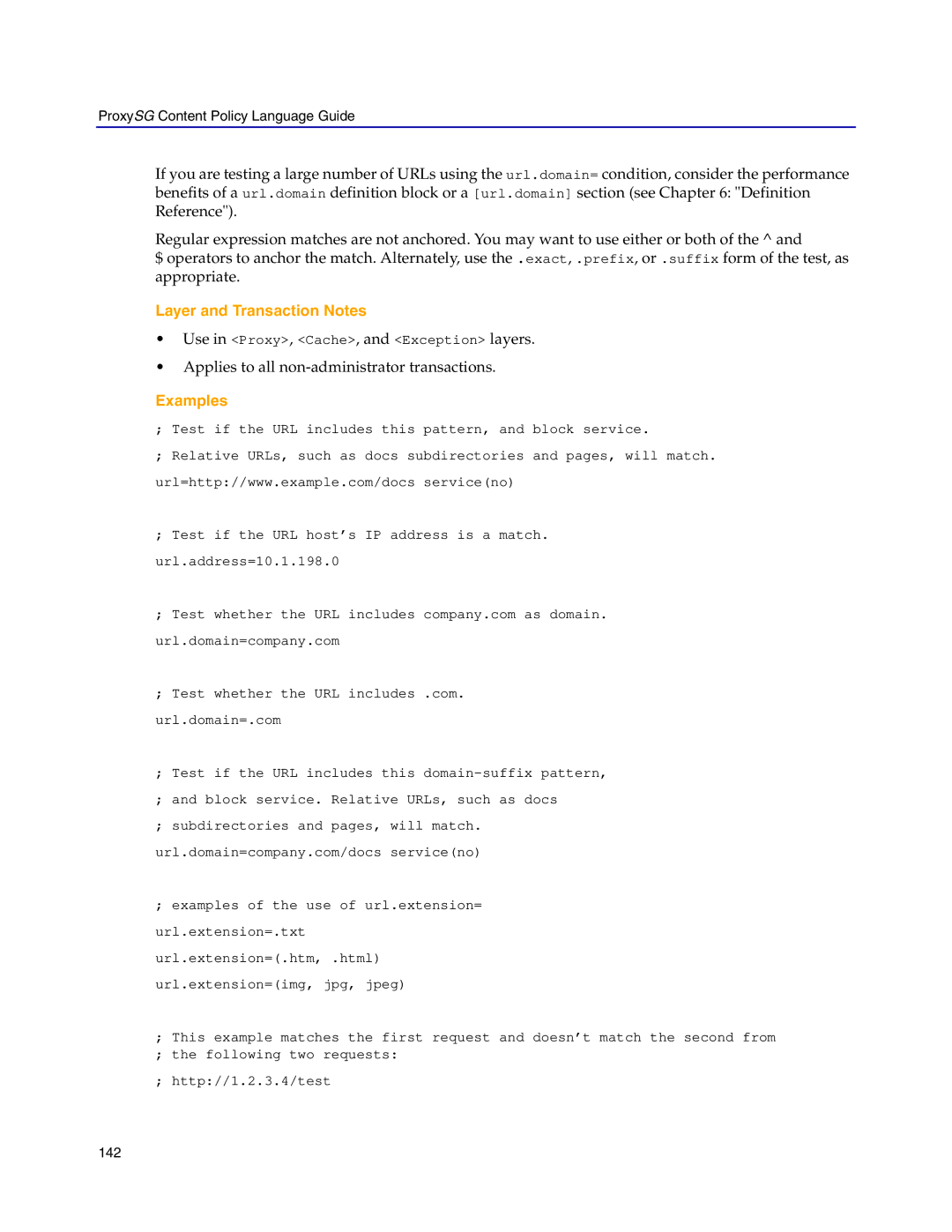ProxySG Content Policy Language Guide
If you are testing a large number of URLs using the url.domain= condition, consider the performance benefits of a url.domain definition block or a [url.domain] section (see Chapter 6: "Definition Reference").
Regular expression matches are not anchored. You may want to use either or both of the ^ and
$ operators to anchor the match. Alternately, use the .exact, .prefix, or .suffix form of the test, as appropriate.
Layer and Transaction Notes
•Use in <Proxy>, <Cache>, and <Exception> layers.
•Applies to all non-administrator transactions.
Examples
;Test if the URL includes this pattern, and block service.
;Relative URLs, such as docs subdirectories and pages, will match. url=http://www.example.com/docs service(no)
;Test if the URL host’s IP address is a match. url.address=10.1.198.0
;Test whether the URL includes company.com as domain. url.domain=company.com
;Test whether the URL includes .com.
url.domain=.com
;Test if the URL includes this
;and block service. Relative URLs, such as docs
;subdirectories and pages, will match. url.domain=company.com/docs service(no)
;examples of the use of url.extension= url.extension=.txt url.extension=(.htm, .html) url.extension=(img, jpg, jpeg)
;This example matches the first request and doesn’t match the second from
;the following two requests:
;http://1.2.3.4/test
